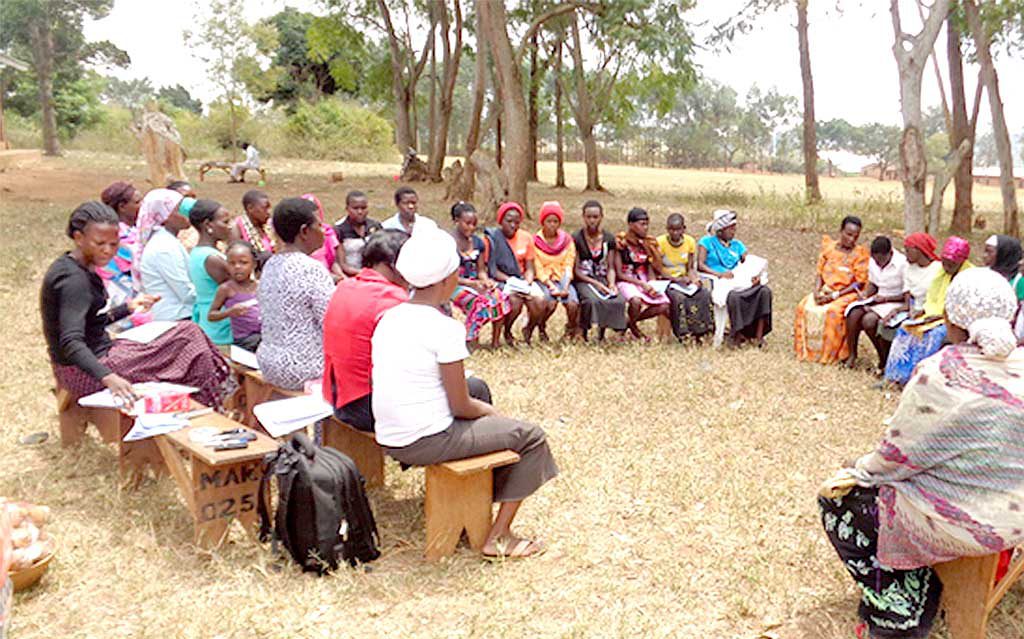
Masaka Diocesan Consortium which is comprised of Masaka Diocesan Medical Services (MDMS), Kitovu Mobile (KM) and Villa Maria Hospital with support from CDC through Mildmay Uganda has so far implemented the DREAMS Program in two districts namely, Sembabule and Bukomansimbi districts in Central Uganda.
DREAMS is an acronym standing for Determined Resilient Empowered AIDS-free Mentored and Safe women.
The DREAMS program started as a two-year (2016 – 2017) CDC-PEPFAR funded project whose overall aim is to reduce the incidence of new HIV cases in adolescent girls and young women (AGYW) between the ages of 15 to 24 years. DREAMS set ambitious targets to attain 25% reduction in HIV incidence among adolescent girls and young women in target areas in Masaka. And by end of 2018, the HIV/AIDS prevalence in this area had reduced by 40%.
DREAMS is a multi-layered model that brings together evidence–based prevention interventions and approaches that address the structural drivers that increase girls’ and young women’s HIV risk, including poverty, gender inequality, sexual violence and lack of education.
In August, 2017 there was a transition in funding of CDC from Mildmay Uganda to Rakai health Sciences Program (RHSP) targeting adolescent girls and young women in countries with a high burden of HIV. Currently Rakai Health Sciences Program is one of the CDC implementing partners for DREAMS program. Under DREAMS, RHSP focused on girls aged 15-24 years in the 7 districts of Bukomansimbi, Lwengo, Sembabule, Lyantonde, Gomba, Rakai and Kyotera. Caritas Maddo collaborated with RHSP in implementation of the program in Bukomansimbi district
Objectives of the program
- To strengthen the economic capacity of AGYW and/or their caregivers to become self-reliant and reduce their vulnerability to risky sexual behavior and choices.
- To increase vulnerable at risk AGYW’s knowledge and skills to prevent risk and protect themselves against HIV infection, and proactively seek and access HIV prevention services through peer-led SBCC and mobilization
- To enable vulnerable at risk AGYW actively participate in the planning and delivery of HIV prevention services in their areas through the Girls Engagement Forum (GEF)
- To increase community awareness and action against harmful socio-cultural norms and practices which put AGYW to increased risk and exposure to HIV infection
Strategic approach
Masaka Diocesan Medical Services (MDMS) is using an economic led-approach to prevention recognizing that economic vulnerability is the underlying driver which predisposes AGYW to risky sexual behavior and choices; this exacerbated by harmful gender norms and inequalities, Sexual and Gender Violence, and low access to responsive HIV prevention and SRH services. Hence, the core package interventions for the DREAMS program includes Post-Violence Care, Community Mobilization/ Norms Change, School Based HIV Prevention/SRGBV, Parenting/Caregiver Program, Combination Socio-Economic Approaches, Linkage to VMMC, Linkage to ART, Peer to peer psycho-social support and STI screening &linkage.
Rational for the program
The adolescent girls and young women still lack adequate access to HIV/AIDS services and the data still indicates a higher prevalence of HIV in Sembabule and Bukomansimbi. With all the investment in HIV/AIDS services, a shift is needed in line with this program to address issues of focusing on highest impact interventions, focusing resources in key geographic areas with the highest burden and on key populations and getting ahead of and ultimately controlling the epidemic. This is in line with the 90-90-90 UNAIDS approach of focusing resources where we can hit the epidemic hardest so that we can control the epidemic and save people of the long term economic burden.
Achieving “epidemic control” implies that point at which new HIV infections have decreased and fallen below the number of AIDS-related deaths. Achieving epidemic control will require significant reduction of new infections in Key/Priority Populations especially adolescents. This shall be done through reduction in risky sexual behavior and choices, as well as achieving the UNAIDS 90-90-90 targets among the infecting population (infected male partners). This program will deliver a Core Package of evidence-informed interventions for Uganda that go beyond the health sector, addressing the structural drivers that directly or indirectly increase girls’ HIV risk, including poverty, gender inequality, sexual violence, and lack of education.
